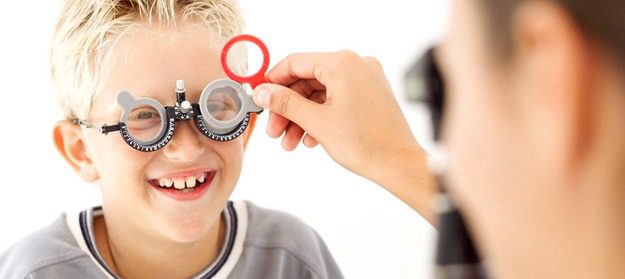Pediatric Eye Exams
PEDIATRIC EXAMS
When Should My Child Have an Eye Exam?
-
Your pediatrician should examine your child’s eyes during the first year of life.
-
All children should have a comprehensive eye exam before they start school unless vision problems occur sooner.
-
Early diagnosis and treatment of childhood eye disease may prevent vision problems later in life.

COMMON DISORDERS OF PEDIATRIC PATIENTS
Refractive Error
Nearsightedness, farsightedness, and astigmatism are refractive errors. These common disorders do not always require glasses or contact lenses. Multiple factors uncovered during your child’s comprehensive eye exam, and a discussion with the doctor, will determine whether correction of refractive error is indicated for your child.
Amblyopia, or “Lazy Eye”
This is the most common cause of potentially irreversible vision loss in children. One of both eyes sends a blurred image to the brain. Normal vision does not develop. Glasses, patches, and eye drops are possible treatment modalities for this condition.
Strabismus (Crossed/Drifting Eyes)
The eyes are not straight in one or more positions of gaze. In other words, there is an ocular misalignment. The most common forms are esotropia (in-crossing) and exotropia (out-crossing or wandering eyes.) Treatment can include glasses, patching and/or eye muscle surgery.
Copyright ©2023 all rights reserved
